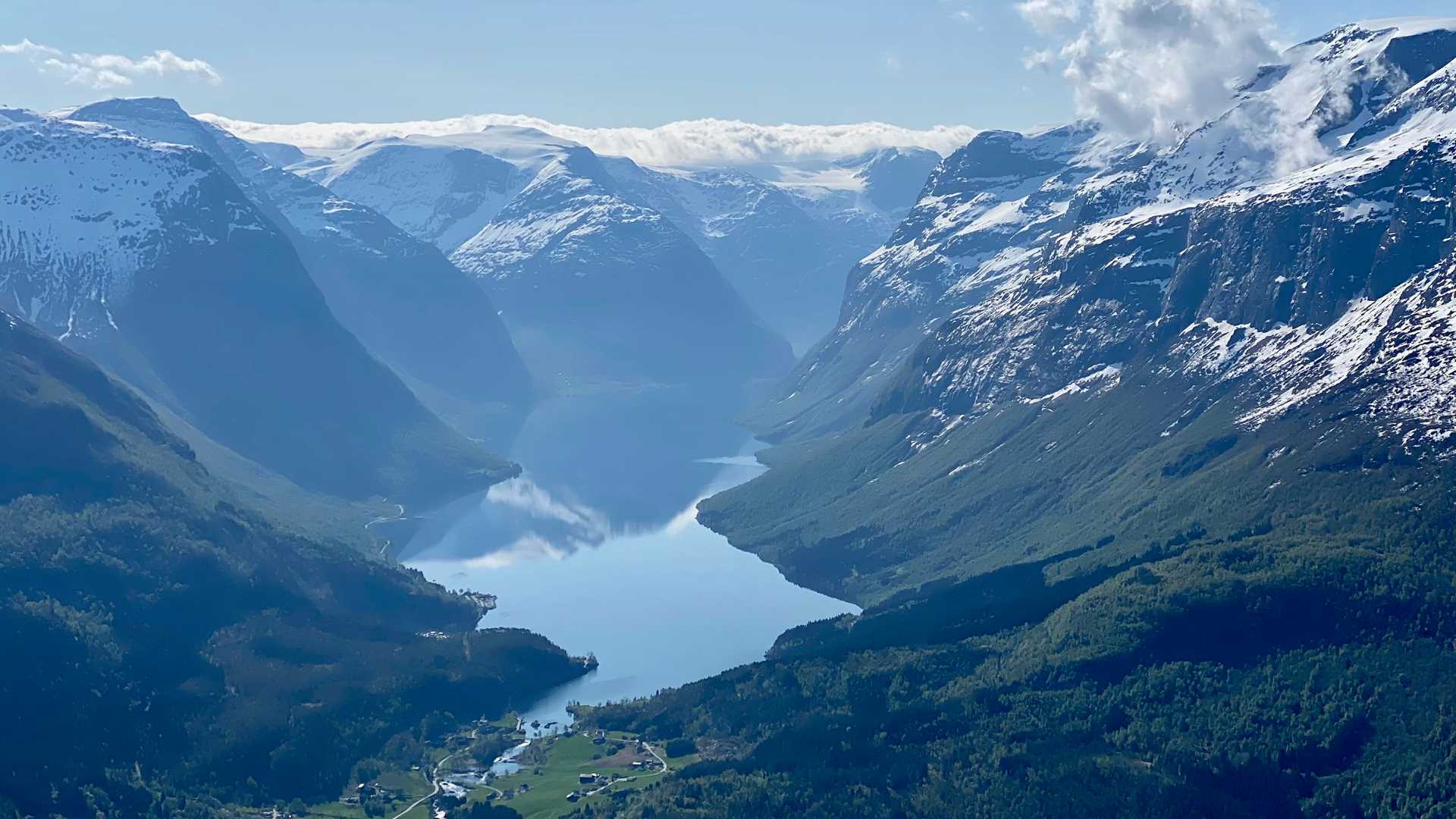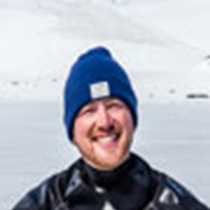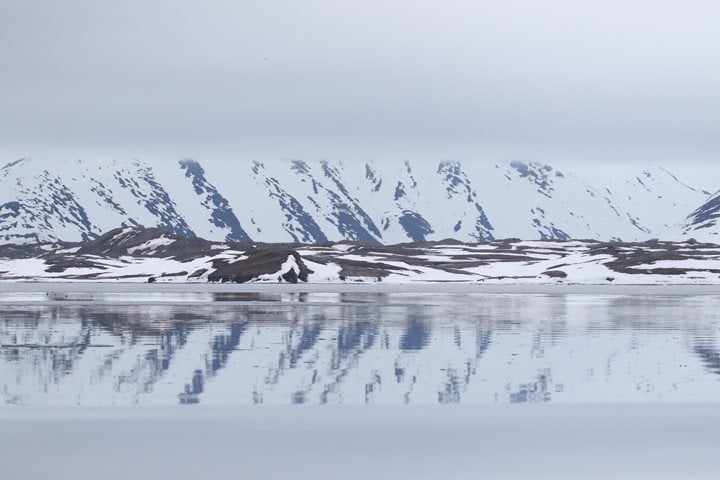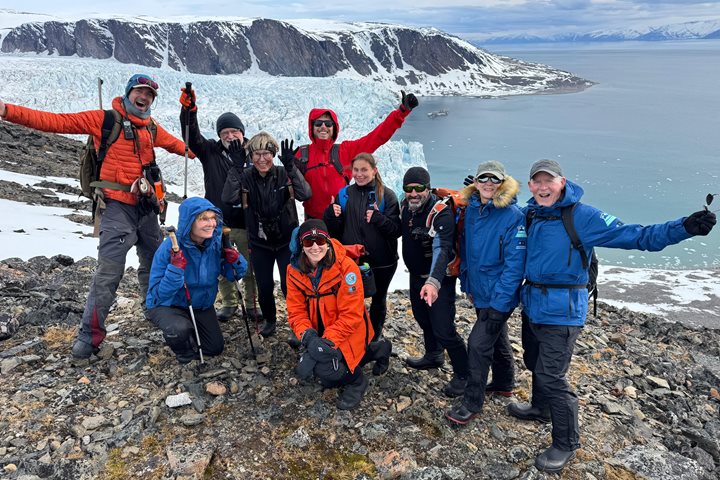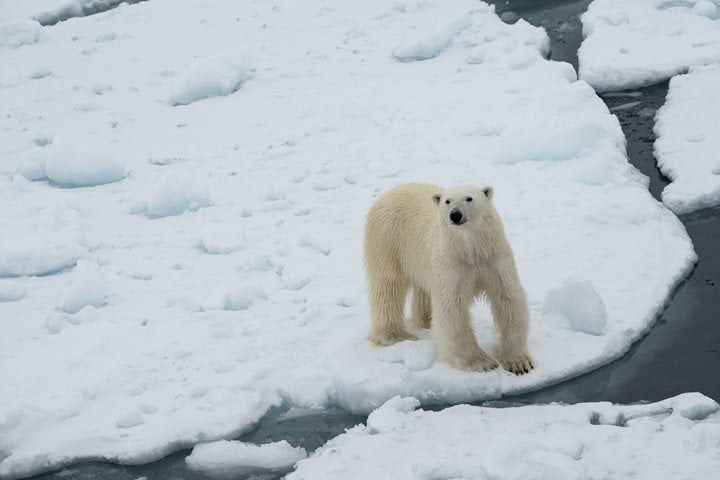National Geographic Endurance awoke surrounded by the heights of a Norwegian fjord. Choosing Loen as our first destination, guests set out to explore the mountainous landscapes and the treasures within. A highlight was the local sky lift, which sent our explorers to a height of 3,000 feet in a matter of minutes. This true feat of engineering led to a most spectacular view. From such a height, our mighty vessel looked small as a child’s toy. Perhaps the grandest reward of the day was the perfect weather. A day of sunshine and reflections, whereas often southern Norway is one of the wettest places in continental Europe. It was a great start to what is certain to be a spectacular voyage.
Photographers: Paul North, Dr. Rebecca Smith-Coggins, and Ezra Siegel

